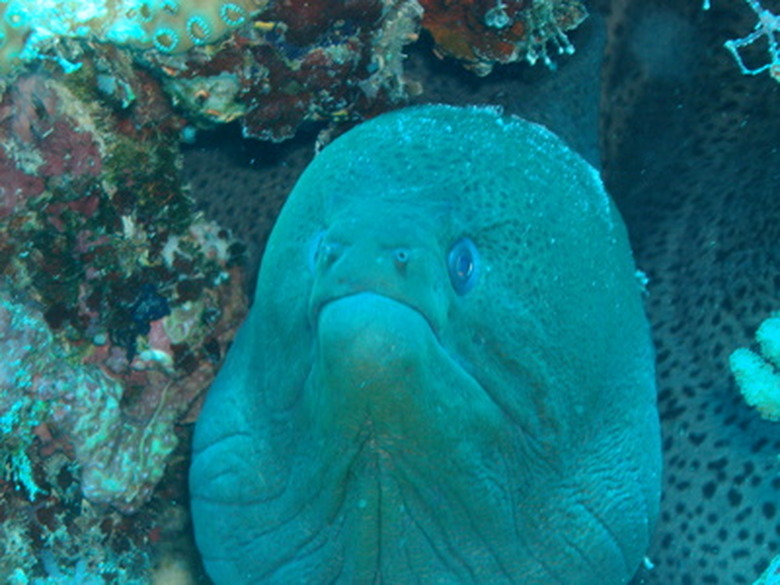What Type Of Ocean Zone Do Eels Live In?
Eels are an order of predatory elongated fish with a fused dorsal fin covering the length of the back. Most eels do not have pectoral or pelvic fins, or if they do, these fins are so small they are not useful. Eels can be found in the top three zones of the ocean: epipelagic, mesopelagic and bathypelagic. Some eels live in freshwater for most of their lives, but they return to the ocean to spawn.
Epipelagic Zone
Epipelagic Zone
The epipelagic zone, or the sunlight zone, is home to the coral reefs. The eels in this zone wait in the nooks in the coral reefs until a fish swims too close to their hiding spots and the eel catches it. Eels are nocturnal, so divers rarely see them in their explorations. The epipelagic zone is home to moray eels, false morays, congers, snake eels and duckbill eels.
Mesopelagic Zone
Mesopelagic Zone
The mesopelagic zone, or twilight zone, has very little light penetration. The eels in this zone are pelagic fish, meaning that they swim in open waters away from the beach and the bottom of the ocean. The mesopelagic zone is home to snipe eels and longneck eels.
Bathypelagic Zone
Bathypelagic Zone
The bathypelagic zone, or midnight zone, has no light beyond what the creatures generate. The water pressure is high, but the body shape of the eels makes it possible for some families to withstand the pressure. The bathypelagic zone is home to cutthroat eels, sawtooth eels, swallower eels, gulper eels and monognathid eels.
Freshwater
Freshwater
Freshwater eels are born in the shallow waters of the ocean where they float as larvae for more than one year. They migrate to rivers and mature into adult eels in the freshwater. They remain in the freshwater for at least a decade before they return to the ocean to spawn.
Electric eels are more closely related to catfish than eels. These false eels are found in the Amazon River and never reside in the ocean.
Cite This Article
MLA
Hippler, Megan. "What Type Of Ocean Zone Do Eels Live In?" sciencing.com, https://www.sciencing.com/type-zone-do-eels-live-7846847/. 22 November 2019.
APA
Hippler, Megan. (2019, November 22). What Type Of Ocean Zone Do Eels Live In?. sciencing.com. Retrieved from https://www.sciencing.com/type-zone-do-eels-live-7846847/
Chicago
Hippler, Megan. What Type Of Ocean Zone Do Eels Live In? last modified March 24, 2022. https://www.sciencing.com/type-zone-do-eels-live-7846847/
